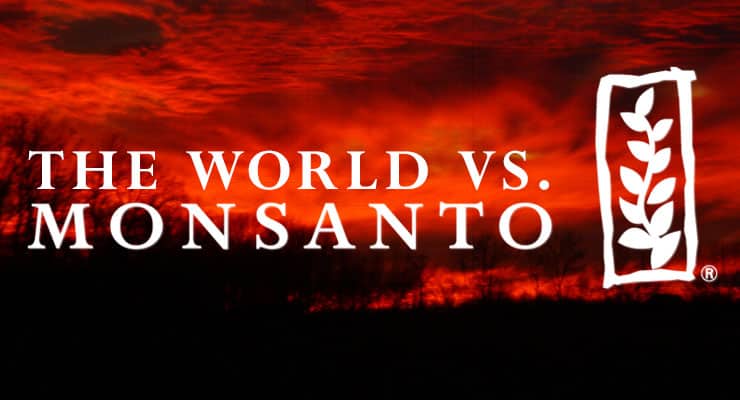
Starting in 2013, the Monsanto Company made a major play to not only consolidate its control over the agribusiness industry, but to seize permanent control of the entire world’s food supply. Ultraculture, and the entire world, fought back. Here’s a history of the Great Monsanto War of 2013-15.
From 2013 to 2015, Ultraculture helped lead the charge against the Monsanto Company, and worked to guide and encourage the global effort to get chemicals and genetic tampering out of our food supply.
Monsanto has relentlessly and ruthlessly lobbied for the ability to re-engineer our food for profit, without consumers knowing what it’s doing—particularly in the United States. Thanks to a network of lobbyists passed through the “revolving door” between public office and private corporate appointments, Monsanto has been able to operate largely without the American public having any awareness of its actions.
But nothing can stay hidden for long. Our reporting on Monsanto rocketed to the top of Reddit, breaking the story of the “Monsanto Protection Act,” helping to initiate the global furor that prompted the two-million-strong “March Against Monsanto” and forcing the company into backpedal mode as its stock took a hit.
All of this reporting (which we followed up with by breaking the story of the TPP at Vice News) resulted in a book, Monsanto vs. the World, which took a critical and investigative look at the company and has since become a lasting success, achieving ongoing sales, becoming a go-to text of the anti-GMO movement and being placed on the syllabus of multiple college courses.
Now it’s time to round up all of our Monsanto reporting into one cornerstone post, which collects the best of our reporting to archive the history of the Great Monsanto War for posterity. The fight against Monsanto—and genetic (specifically transgenic) tampering with food—goes on, and it’s important to have the information summarized for easy access. Read on!
The Firing Shot: Congress Moves to Give Monsanto Immunity From the Federal Government (3/22/2013)

Shocking the (at this point) very few people paying attention, Congress passes a short-term budget measure—the Senate Continuing Resolution spending bill—that includes an anonymously-added rider that many felt gave Monsanto immunity from the federal government.
The rider allows the US Department of Agriculture to grant temporary permission for genetically modified crops to be planted, even if a judge has ruled that said GMO crops aren’t approved—at least until proper environmental reviews are conducted.
Once you plant something, though, it’s hard to get it out of the wild, even should the USDA suddenly change its mind after already giving approval. Once they take root, GMO crops can spread or cross-pollinate into the environment—carrying whatever genetic programs their creators have loaded them with.
(Monsanto denies it uses the much-discussed gene-use restriction technology or “terminator seeds,” which would deaden seeds after one planting so that farmers couldn’t save seeds from their own crops, and would be dependent on buying seeds from the agribusiness giant. However, this may have been a false statement.)
The bill requires passage by the Senate, and approval by Obama—and would only be good for six months, even if passed.
Shockingly, the story is blacked out of the mainstream media, as is covered only by NPR, a small handful of organic food and activist blogs, and Russia Today. The articles that did appear are quickly washed away on Google News by a slew of articles about how a local farmer was awarded a $2,500 check by Monsanto. (Yes, really.)
Monsanto’s Shocking Power Grab for Total Dominance of the World’s Food Supply Continues (3/26/2013)
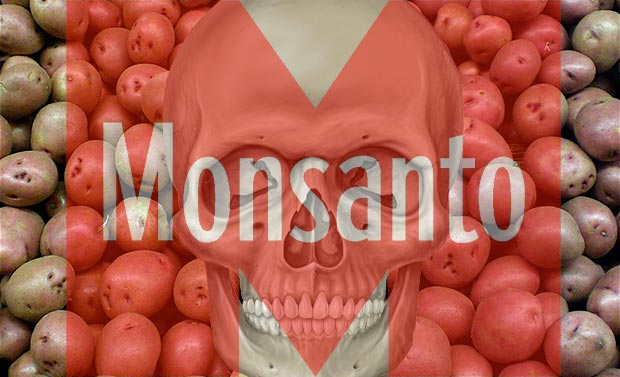
As the story develops over the week, the mainstream media remains completely silent about the issue.
Mainstream blogs are also conspicuously silent—or even start looking like they’ve been paid to run pro-Monsanto propaganda, particularly in the case of a stunning pro-GMO apologia from io9, a blog in the Gawker network, which has also been running what appears to be obnoxious paid content for McDonald’s at their Lifehacker blog (which at this point has an a entire McDonald’s section).
io9’s article suggests that “opponents of genetically modified organisms have been labeled the climate skeptics of the left, and for good reason: many of these criticisms are largely unfounded, and most miss the real issue entirely.”
The article also shouts the praises of GMO potatoes—one of Monsanto’s biggest products, which it supplies to McDonald’s for their french fries. (How odd, then, that the same blog network that would consistently run McDonald’s ad content at Lifehacker would also run PR spin for GMO potatoes at io9.)
All of this is also coming on the heels of a very public hit campaign against prominent seed activist Vandana Shiva, who had been torn down by the media for comparing GMOs to rape on her Twitter.
Well, when you own 90% of the world’s GMO food supply, paying off the media isn’t a problem, one guesses. Especially when you’re getting in position to own the rest of the 10% you don’t control yet.
It’s small potatoes compared to buying the government, for instance, as seen in the grab for immunity from the government. And—how “odd” is this?—the very same week that Monsanto makes its move with the USDA, the Obama administration pushes out Kathleen Merrigan, the USDA’s deputy secretary—the administration’s biggest and most powerful supporter of local and organic food. Her departure is described as “abrupt,” and was expected to lead to “the end of local food at USDA.” How strange.
But pocketing the government and public opinion are minor efforts compared to the even bigger battle Monsanto wins the same day, by settling with its main competitor, DuPont, over GMO seed technology. The two behemoths are now planning collaboration (with Monsanto driving). DuPont would be allowed to produce Monsanto’s seeds, and have to pay royalty payments to do so; their stock dropped while Monsanto’s rose.
Reuters reported that “Monsanto Co and DuPont have settled a bitter legal battle over rights to technology for genetically modified seeds and will drop antitrust and patent claims against each other while forging a new collaboration, the companies said on Tuesday. The deal tosses out a $1 billion jury verdict DuPont was ordered to pay Monsanto last August. Instead, the companies agreed that DuPont would make at least $1.75 billion in royalty payments over several years in exchange for broad access to develop products using Monsanto’s leading genetic technology.”
All this means that Monsanto is now positioned to control literally everything the planet eats.
Luckily, Ultraculture’s reporting on the issue shoots to the #3 position on Reddit overnight—despite nonstop efforts from the infamously compromised Reddit mods to sink the story—crashing our still tiny blog (then being run off of a shared Hostgator server and woefully unequipped to handle the crushing wave of Reddit traffic, leading me to be up all night on the phone with the hosting company to meet demand). The Reddit score rockets the Monsanto Protection Act into national consciousness, and the story is soon being covered by the Daily Show, Rachel Maddow and across the mainstream media. It’s an exhilarating moment showing just how much power blogs and alternative media—even run by (at that point) a single person—can truly have.
The Monsanto Protection Act Passes; Monsanto Deploys Shill Armies to Cover Up the Damage From the Negative Publicity We Initiated (3/29/2013)

Despite public outcry against the Monsanto Protection Act, both in the real world and online, Obama signs off on it.
At this point, most of the Internet is focused on the push for gay marriage—just as Obama is also signing the impossibly draconian NDAA into law. Though gay marriage is a crucial issue, what’s on the table with Monsanto is one company (whose “competition” is now selling their seeds) controlling the world’s food supply—and maintaining its right to poison it.
It was a “Godfather”-style coup—and the “Monsanto Protection Act” is only one small part of a full-spectrum push to dominate the world’s food supply.
After anti-Monsanto efforts gain traction, there’s also a troll backlash of conservative and “skeptic” blogs claiming that the Monsanto Protection Act doesn’t even exist. Some of them cite as references the same Redditors who tried (very unsuccessfully) to shut down Ultraculture’s coverage. Their main contention is that the rider isn’t actually called the “Monsanto Protection Act,” and that it was sensationally titled that by Food Democracy Now. Even Snopes takes a swing at it, but largely ends up restating the legal details without addressing any wider ramifications.
All of this nit-picking of course doesn’t mean that the rider wasn’t co-written by Monsanto, or that it didn’t provide a legal loophole that gives agribusiness immunity from the USDA. Pro-GMO “skeptics” state that the rider was meant to protect farmers from having crops they’ve already planted destroyed. That may certainly have been a surface intent of the rider, but that didn’t mean it wasn’t meant for exploitation by agribusiness.
Critics also point out (as I did) that the rider is only good for six months (until renewed, of course). But if it’s meant to protect farmers from having to destroy previously-planted crops, why would the USDA suddenly change its mind and declare that bad GMOs would have to be destroyed six months in? They wouldn’t, and that’s the point.
In addition, six months is more than enough time for any GMO organisms that Monsanto, DuPont (now selling Roundup Ready Monsanto seed) or anyone else planted to take root in the wider environment. And even if the crops are recalled and destroyed six months later, those GMO organisms would still be spreading and propagating their genetic information in the wild, sending viral information into the biosphere and landing in rival farms that Monsanto could then sue into oblivion for “copyright infringement.”
Another dodge I see people repeatedly using is saying “we’ve been genetically modifying crops for millennia.” This is a patent falsehood: What these people are doing is confusing high-tech genetic engineering and direct gene modification with hybridization, which is the practice of simply cross-breeding plants by hand, which carries no dangers. A far cry from inserting genetic sequences into corn, for instance, to make it produce its own insecticide.
Another apologetic tactic I see going around Facebook and blogs is saying that Obama somehow “had” to sign the bill, or that it was all the Republicans’ fault for putting the rider in, and that Obama was somehow still the good guy. This is what people were also saying about Obama passing the NDAA, as well, and was a misunderstanding of how the federal government works. It’s technically the president’s job to veto bills. That’s what he’s there for; his role in the government is “that guy who has veto power on bills.”
Failure to exercise this power to protect the people he serves—whether it’s from Roundup Ready crops in the case of the Monsanto rider, or from making sure citizens are Ready to be Rounded Up in the case of the NDAA, could easily have been seen as complicity.
62 countries have labelled GMO food at this time—the EU in particular wised up on the issue over a decade previously. There, food products proudly display a “GMO free” logo—you can imagine what a selling point that is for the brands who distribute GMO-free food, and what a shaming point it is for those who don’t. But we don’t do that in America, because big agribusiness has made damn sure it hasn’t happened.
That’s policy that’s been engineered by people like Michael R. Taylor, previous Vice President of Public Policy at Monsanto—and current Deputy Commissioner for Foods at the FDA. Yes, Monsanto’s top lawyer had been put in charge of what you eat—and by the way, Obama appointed him. This meant that Monsanto, the same company that brought you DDT, Aspartame and Agent Orange, was now in charge of what America eats, thanks not only to Michael Taylor’s appointment and the passage of this rider, but also to their direct turfing out of their competition.
Monsanto’s Roundup Herbicide is Linked to Parkinson’s and Cancer (4/29/2013)
While Monsanto is getting hammered in the media, more bad news for the agribusiness giant emerges when a peer-reviewed study finds that Monsanto’s Roundup herbicide, which is used across the world in tandem with Monsanto’s genetically-modified “Roundup Ready” crops, can be linked to Parkinson’s, cancer and other health concerns. The data is brought to light by a peer-reviewed study from a scientist at MIT and a retired science consultant from management consulting firm Arthur D. Little, Inc.
Anti-GMO or anti-big agribusiness science has traditionally been a minefield. Because nearly all of the studies on GMOs are funded by the very corporations that would stand to lose billions if their products were found unsafe, there have been very few studies conducted into the health risks of genetically modified food. All of the studies published warning against GMOs have been shredded as lacking proper methodology or peer review—and big agribusiness is all-too-ready to fund the attacks.
However, having a study backed by MIT was going to be a bit harder for Monsanto to shake. The study cited inflammation throughout the body as a major risk of glyphosate consumption, which is what critics of GMO foods (about Bt corn, not glyphosate specifically) have been saying all along albeit without credible scientific backing.
High Fructose Corn Syrup, Which is Usually Produced From Monsanto’s Genetically Modified Corn, is Linked to Colony Collapse Disorder (4/30/2013)

Colony collapse disorder, or the widescale death of bees, has long been a troubling marker of environmental degradation. Its cause has also remained a mystery, despite being blamed on everything from industrial pollution to cell phone tower radiation. (It’s likely a complex set of factors—Europe, for instance, is banning neonicotinoids, pesticides that have been linked to bee deaths.)
However, a study from the University of Illinois now names a clear factor: Beekeepers have been feeding bees high fructose corn syrup instead of honey. High fructose corn syrup has been linked to a huge range of health problems in human beings, specifically obesity; it’s also in just about all processed food, which has been blamed for the rise in diabetes and weight problems in America and abroad.
High fructose corn syrup, of course, is usually made from Monsanto’s genetically engineered Bt corn, which has been altered to produce its own insecticide, a Bt toxin that destroys the stomachs of insects who munch on the corn. Is there any wonder that high-fructose corn syrup would kill the bees that eat it?
Anti-Monsanto Protest Erupts Worldwide (5/28/2013)
As the story Ultraculture broke makes its way around the world, nearly 2 million people participate in May 25’s worldwide protest against the Monsanto company. Dubbed the “March Against Monsanto,” the protest takes place in 52 countries and 436 countries, according to the march’s organizers. Coverage in the US media is, of course, minimal.

I attend the Downtown Los Angeles march along with dedicated new Ultraculture intern Spencer Salmon, where an incredibly passionate and well-informed crowd has gathered on the steps of Los Angeles City Hall. (LA City Hall was also the site of the city’s considerably laid-back Occupy encampment—the Occupiers destroyed the grass around the building, however, resulting in City Hall being fenced off while the sod was replanted—it had just been reopened to public gathering.)
The crowd is a good mix of Occupiers and local organic food supporters; several small interest groups like the crew that pushed Prop. 37 are represented (along with, yes, Anonymous and Infowars). As we arrive, the steps of City Hall are occupied by a troupe of indigenous dancers in full dress, seen in the video below:
We have, unfortunately, missed the massive march itself, which had started in Pershing Square and snaked through DTLA that morning, but now we have prime seats to watch the speakers, a sequence of which now take the stage to make clear their anger against Monsanto and their distrust of the company’s transgenic foods.
In the clip below, this guy lets the crowd know he’s mad as hell and isn’t going to take it anymore, and urges his listeners to question what they’ve been told and what they assume to be true:
I’m struck by how much of the crowd are decked out in either shamanic garb or with pagan symbols. The feeling of “conscious resistance” was overwhelming—the witches and shamans were out in full force to exorcise a corporate demon threatening their planet. Check out the necklace on this young Anon, for instance:

Or even (and this completely floors me, I have to double-check with Mr. Salmon to make sure I wasn’t hallucinating it) this young woman (who turns out to be porn star Sensi Pearl), who’s sporting a home-made t-shirt with instructions on how to do the Lesser Banishing Ritual of the Pentagram:

This is true and awakened resistance… and as if to underline the point, the next speaker to take the stage is a Maori medicine woman who has traveled to LA from New Zealand, ready to lay down some heat on Monsanto and light some fire under the crowd by reminding them of their responsibility to future generations. Check out her epic beat-down below:
As the crowd begins to dwindle, we high-tail it out to avoid the brutal ozone-free LA sun, having gotten a taste of the true public reaction to Monsanto and genetically modified food, despite the blackout by the mainstream media.
Monsanto Recoils From Global Protest and Scales Back GMOs in the European Union (6/3/2013)
Despite media silence, protest against Monsanto and genetically modified food swells to massive proportions across the world after the “Monsanto Protection Act” clears Congress. The March Against Monsanto turns out to have only been the beginning, as the corporation starts facing major setbacks throughout the world (but not America—yet).
Most surprisingly, as reported on the front page of the Huffington Post, Monsanto starts withdrawing from Europe:
Monsanto Co is not pushing for expansion of genetically modified crops in most of Europe as opposition to its biotech seeds in many countries remains high, company officials said on Friday.
European officials for the St. Louis, Missouri-based Monsanto told the German daily “Taz” that they were no longer doing any lobby work for cultivation in Europe and not seeking any new approvals for genetically modified plants.
“We’ve come to the conclusion that this has no broad acceptance at the moment,” Monsanto Germany spokeswoman, Ursula Lüttmer-Ouazane, told Taz.
Japan also rejects GMOs after an Oregon farmer finds GMO wheat growing in a patch of land where there were no GMOs planted—stoking old fears that GMOs may cross-pollinate in the wild and invade natural crops. The GMO he finds is one that Monsanto had developed but claimed to have never released, which is enough to prompt Japan to suspend wheat imports from the US.
Activists Torch GMO Sugar Beet Crops in Oregon; FBI Investigates (6/27/2013)

In a story that barely made it outside of Oregon, over 6,500 genetically modified sugar beets are destroyed in fields between June 8 and 11 by unknown parties. The beets in question were being managed and grown by the agribusiness corporation Syngenta AG, and have been genetically modified to be resistant to Monsanto’s Roundup herbicide, meaning whole crops of the sugar beets could be sprayed with weed-killer, killing only the weeds and leaving the beets—and, of course, leaving Roundup on the beets. (“Occupy Monsanto” later claimed that no crops were torched, and that they were only pulled up.)
The FBI declares the act “economic sabotage and a violation of federal law involving damage to commercial agricultural enterprises.”
The action comes on the heels of the discovery of Monsanto genetically modified wheat growing in a field in Oregon—wheat that Monsanto claimed it stopped testing in 2005. This find stokes fears that GMO crop strains may spread in the wild, potentially edging out non-GMO crop strains.
In addition to Japan’s ban, Europe and several Asian countries are also now carefully testing US wheat imports to make sure they weren’t genetically modified (GM wheat is not currently commercially produced—the major GMO crops are corn, soy, sugar beets, canola and others). Several US farmers were suing Monsanto over the “rogue” GM wheat. Monsanto was claiming sabotage—but even the USDA was skeptical of their allegations. In related news, GM flax has also been found circulating around the world.
Broadly speaking, why would Monsanto benefit from their seeds proliferating in the wild? Anti-GMO proponents have long suggested that direct contamination of crops by their seeds could allow for legal action against farmers on whose land those seeds are growing. Monsanto has regularly won lawsuits against small farmers the company found growing Monsanto seeds, whether intentionally or not—on June 10, 2013, Monsanto wins another round in the US Court of Appeals for the Federal Circuit, blocking organic farmers from preventing Monsanto from suing them if their seeds were found in their fields.
For a bit of international and historical context on these actions: In 1998, citizens in Scotland, England and Ireland tore up GMO crops planted by Monsanto, Aventis and Novartis. Even Prince Charles joined their cause, stating that agribusiness was conducting a “gigantic experiment… with nature and the whole of humanity which has gone seriously wrong. What we should be talking about is food security not food production—that is what matters and that is what people will not understand.” In response, Monsanto launched a $1.5 million PR campaign to convince the British public to relax. Yet protests soon spread across the European continent, and on May 26, 1998, the European Union penned laws requiring genetically engineered foods to be labeled. In 2011, Hungary destroyed every crop field it found to contain GMOs—over 1,000 acres; distribution of GMOs is illegal in that country. Similar protests have taken place across the world.
Following Mass Protest, Monsanto Withdraws New GMOs From Europe (7/20/2013)
According to the Los Angeles Times, “Monsanto Co. said Thursday it will largely drop its bid to grow some of its genetically modified crops in Europe. The world’s largest seed-maker has nine pending applications with the European Commission, the executive body for the European Union. A spokesman said the company plans to withdraw eight of those applications. The requests ‘have been going nowhere fast for several years,’ said Brandon Mitchener, a spokesman for the St. Louis-based company’s European entity. ‘There’s no end in sight… due to political obstructionism.’”
Despite entrenched anti-GMO sentiment in Europe, it’s still a different story in America. Thanks, largely, to a revolving door policy in which Monsanto employees have moved on to occupy key positions in the FDA, USDA and EPA, as well as become lobbyists and even presidential cabinet appointees, GMOs and big agribusiness have been given iron-clad protection in America. Not only are GMOs forced on us, Americans are largely kept in the dark about the issue at all.
Wall Street Starts Turning on Monsanto; MON Stock is Dropped From Hedge Funds (8/26/2013)
While consumer groups and activists have been expressing outrage against Monsanto, the markets have been reacting—and the massive public backlash against Monsanto’s back-door legal dealing and the health concerns over genetically modified organisms tanks Monsanto’s ratings on Wall Street; as a result, several hedge funds dump the corporate giant.
According to Insider Monkey, “Monsanto Company (NYSE:MON) has had one of the most up-and-down years of the stocks we track. Shares of the ag behemoth have been unable to get on a run in 2013, as constant drama over GMOs seems to be hitting the newswires daily. With that in mind, it appears that some hedge funds want nothing to do with it.”
The Monsanto Protection is Defeated (9/30/2013)
The original Monsanto Protection Act, which was set to expire after six months, expires—and is immediately extended, prompting another round of outrage and protest in the United States. Only a few days later, however, the bill and its controversial rider are dropped by the Senate, and is set to expire at the end of the month. Temporary victory is sweet—particularly knowing the Ultraculture played such a large role in bringing awareness to the issue—but the battle is ongoing.
Monsanto Declares Roundup Safe, But Latin America Leads the Charge in Fighting Back (10/23/2013)
After an Associated Press report that Roundup (Monsanto’s trade name for the herbicide glyphosate) isn’t safe, Monsanto (already on the run) goes into further damage control mode.
Glyphosate has already been linked to innumerable health concerns and potential carcinogenic effects—very little of which has been clinically tested or proved. Critics of Monsanto claim that this is because the agribusiness giant tightly holds the reins of the scientific and regulatory processes around GMOs and its other products.
Reports state that Monsanto Co. is calling for more controls on agrochemicals, including its Roundup line of glyphosate-based weed-killers, in response to an Associated Press report about concerns that illegal pesticide applications are harming human health in Argentina. “If pesticides are being misused in Argentina, then it is in everyone’s best interests – the public, the government, farmers, industry, and Monsanto – that the misuse be stopped,” the St. Louis, Missouri-based company said after the AP report was published Monday.
Meanwhile, while the world debates the safety of Roundup, El Salvador is busy outright banning it (along with 52 other harmful chemicals).
Monsanto Wins Again in the GMO Labeling Fight (11/6/2013)
Washington state voters reject the labeling of genetically modified food, meaning that consumers now won’t be able to know what they’re eating. Initiative 522, which would have required GMO labeling, is defeated after Monsanto and other agribusiness giants sink millions into making sure the initiative fails. Big agribusiness conducted the exact same hit campaign against Proposition 37 in California, which also would have required GMO labeling, and also tanked. (Agribusiness spin doctors successfully confused the issue, and California’s left-wing voters, by claiming that the measure would hurt independent grocers.)
Via Businessweek:
An expensive fight in Washington state over whether to label foods with genetically modified ingredients appears to have been decided largely by arguments that such labels would lead to higher grocery costs.
With most of the votes counted, it appears Initiative 522 to require GMO labeling will lose by a 10-point margin. The Grocery Manufacturers Association, a trade group that represents big food companies such as Campbell Soup (CPB), General Mills (GIS), Hillshire Brands (HSH), and PepsiCo (PEP), spent more than $11 million to defeat the ballot measure. Antilabeling donations from DuPont (DD), Monsanto (MON), and Bayer CropScience totaled another $11 million spent to warn that the measure would be “misleading and costly for consumers,” as a DuPont spokeswoman explained.
Labeling supporters weren’t ready to concede defeat Wednesday morning, with about 300,000 ballots uncounted and many of those from Seattle. “This is going to be incredibly close,” said Elizabeth Larter, spokeswoman for the Yes on 522 campaign. Proponents dismissed warnings of higher prices and argued that GMO disclosures on food labels should be no different than existing notices on whether seafood is wild or farm-raised or if orange juice is made from concentrate.
So, how exactly did big agribusiness swing this one? Well, simple—they outbid the competition. To beat I-522, Monsanto and pals raised over $22 million (chump change for them); the top contributors were Monsanto at $5,374,484; Dupont Pioneer at $3,880,159 and PepsiCo at $2,352,966. Other contributors included Nestle, Coke, General Mills, Conagra, Dow, Bayer and more.
And on the home team, bidding to keep the initiative afloat? Total contributions totaled $7.7 million, of which the highest and most significant contributor was… Dr. Bronner’s Magic Soaps.
Doctor Bronner’s Magic. Freaking. Soaps.
Let that sink in for a minute. The primary guardian of the right of the citizens of this country to know what they’re eating is that guy with the schizoid tiny-writing all-is-love soap bottles. And, surprise, it’s not nearly enough to beat the Evil Empire. (You might want to go buy some Dr. Bronner’s Soap, though, because the dude is out $1,840,635 on this fight.)
Environmentalists Sue the US Government for Killing Bees (12/26/2013)
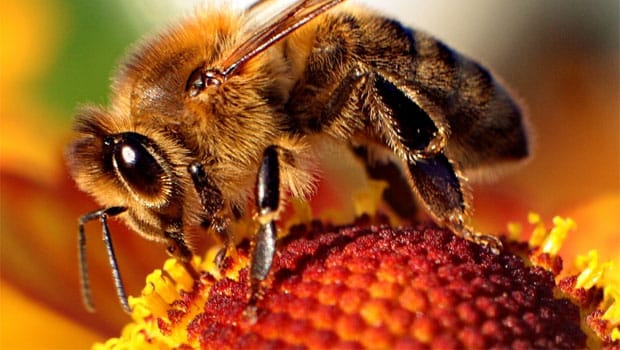
Colony collapse disorder—the widescale, largely mysterious death of bees, to the tune of 10 million beehives in the last six years, which may lead to massive environmental ramifications for the entire world—has been blamed on everything from cell phones to Monsanto GMO corn. The primary suspect, however, is neonicotinoid insecticides. To the massive outrage of environmentalists, the United States government (specifically the Environment Protection Agency) continues to approve neonicotinoids. And now environmentalists start striking back—applying the Endangered Species Act to directly sue the EPA and overturn its approval of the neonicotinoid toxins clothianidin and thiamethoxam.
Monsanto Sinks Billions Into Data Analytics Companies to ‘Optimize’ Farming (12/31/2013)
Monsanto’s gets in on the Big Data push, as the almost universally loathed agribusiness company buys data analytics firm The Climate Corporation for $1 billion. The aligned purchase of Precision Planting, which aims to use data analytics to optimize crop planting, suggests that the company has some serious plans to change the way agribusiness is done.
Whatever the company is cooking up may lead to such massive overhauls in the way agriculture is conducted that farming may soon be unrecognizable. In fact, it will almost certainly destroy small and traditional farmers—even the way that corporate mega-agriculture is currently conducted. We may literally be optimized into an unrecognizable future. And as I once said about the current analytics obsession of lowest-common-denominator-pandering major Internet publications, “‘I was just following my analytics’ is going to be the new ‘I was just following orders.’” Once you just exclusively follow the data, the machine, you run the very, very high risk of optimizing the humanity and conscience out of what you do. You’re just lube for Skynet at that point.
It’s also highly uncertain who owns the data that Monsanto—and agribusiness giants DuPont and John Deere, also getting in on the plan—will mine from small farmers… or what they will do with it once they get it. (One concern is that they will use the data to individually optimize prices of products to farmers so that they can charge what they know the farmer can afford… potentially destabilizing the market.) It will, in essence, allow agribusiness to use farmers’ own data against them in order to price gouge and push new products and insurance schemes on them.
Below, a pretty typically ass-licking interview with two rather unhealthy-looking representatives from Monsanto and Climate Corporation from TechCrunch, where they get easy questions that let them spin all kinds of spinny-spin-Spin-Doctor-spin-spin without any challenge. Think money got exchanged over this one?
The Supreme Court Rules That Monsanto Can Sue Farmers Over Seeds (1/14/2014)
As 2014 opens, the US Supreme Court rules that Monsanto can sue farmers it believes has violated its seed patents.
Activists have regularly alleged that Monsanto-patented seeds can blow into farmers’ fields, allowing Monsanto to then sue farmers who may not have intentionally placed seed in their fields. (To be fair, the legal battles over this—which occurred in Canada, not the US—didn’t make it look like Monsanto was at fault.) However, the ruling puts small farmers so firmly under the thumb of the agribusiness giant that it doesn’t look good for the future of American farming or food sovereignty.
It’s worth noting, of course, that Associate Justice Clarence Thomas worked as a lawyer for Monsanto between 1977-1979. Associate Justice Sonia Sotomayor previously ruled in favor of Monsanto’s GM alfalfa.
Via Reuters:
The U.S. Supreme Court upheld Monsanto Co’s biotech seed patents on Monday, dealing a blow to a group of organic farmers and other activists trying to stop the biotech company from suing farmers if their fields contain a few plants containing the company’s genetically modified traits.
The Organic Seed Growers and Trade Association and a group of dozens of organic and conventional family farmers, seed companies and public advocacy interests sued Monsanto in March 2011. The suit sought to prohibit the company from suing farmers whose fields became inadvertently contaminated with corn, soybeans, cotton, canola and other crops containing Monsanto’s genetic modifications.
Monsanto has genetically engineered its specialty seeds to withstand dousings of glyphosate, the main ingredient in the company’s Roundup herbicide.
Meanwhile, the company has been pushing GMO corn in Africa (with the help of Bill Gates) even as China is rejecting Monsanto’s corn (the country is massively anti-GM).
In the US, previously staunch GMO supporter General Mills announces that Cheerios will now be GMO-free; and Maine follows Connecticut by becoming the second state to require labeling of GMOs (similar efforts have failed in California and Washington State, thanks in part to Coca-Cola and several other corporations and lobbying groups)—yet despite this resistance, the USDA is pushing for the release of herbicide-resistant GMO corn and soybean seeds that activists have dubbed “Agent Orange corn.”
In Europe, activists have sued the European Commission over said GMO soybeans, leading the UK government to actually intervene in the case. Asshole British Conservative MP and Secretary of State for Environment, Food and Rural Affairs Owen Paterson told British farmers last week that Britain is set to become “the museum of world farming” because of its rejection of GMO crops.
Meanwhile, Monsanto—which posts a negative 9.30% earnings in Q4 2013—is expected to disappoint again in Q1 2014, largely due to being undercut by competitors.
Monsanto Weed Killer Found in 75% of Mississippi Rain & Air (2/24/2014)
A study published in the journal Environmental Toxicology and Chemistry on February 19, 2014 analyzes air and rain samples collected during the 1995 & 2007 grow seasons in the Mississippi Delta. While the study finds less pesticides used in 2007, it also finds similar concentration ranges in both years. Among the findings is that glyphosate (aka Roundup) has been detected in over 75% of air and rain samples in 2007 (glyphosate wasn’t detected in 1995, though high concentrations of atrazine, a Syngenta-produced herbicide that has been shown to change the gender of frogs, has).
Now, that’s perhaps hardly surprising considering how much Roundup is likely sprayed in Mississippi agricultural areas—it is, after all, the world’s most popular herbicide. What’s worrying, however, is what the effects of that level of glyphosate saturation might have on the environment and human beings.
Nature Evolves an Anti-Monsanto Weapon (3/19/2014)
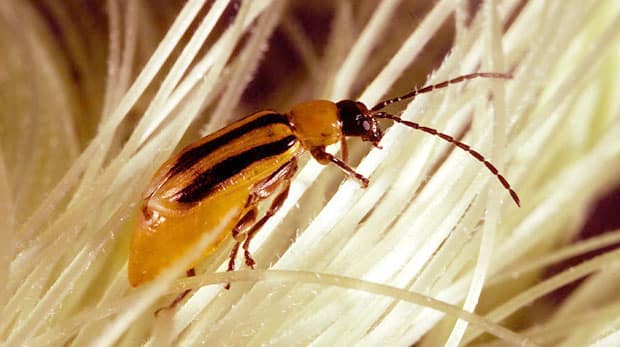
Bt corn has up till now been one of Monsanto’s most lucrative—and controversial—products. Proponents of transgenic genetic modification of crops have hailed it as a massive breakthrough, allowing huge fields of corn to be grown without insect invasion, sparing farmers who plant Bt corn huge crop losses.
But what is it exactly?
Bt corn is engineered to incorporate a soil bacteria—Bacillus thuringiensis, or Bt—that is toxic to the rootworms that feed on corn. That means, essentially, that GM corn produces its own bioweapons, exuding the Bt bacteria as an insecticide that kills the rootworms, and produces greater corn yields. Critics of GM crops have suggested that the Bt toxin is not only harmful to insects, but to the humans and animals that later consume the corn. Scientific studies on Bt have suggested that Bt corn is safe for human consumption—however, a lot of those studies are also funded by big agriculture companies.
Regardless of the safety of Bt for humans, however, in early 2014 nature (bizarrely) decides it’s had enough—and rootworms are discovered that have evolved a resistance to Bt toxins.
That means that Bt corn—which at this point counts for over 3/4 of US corn production—may soon be obsoleted. As Jeff Goldblum said in Jurassic Park… “nature… nature finds a way.”
Five Countries Start Throwing Monsanto Out on Its Ass (4/1/2014)
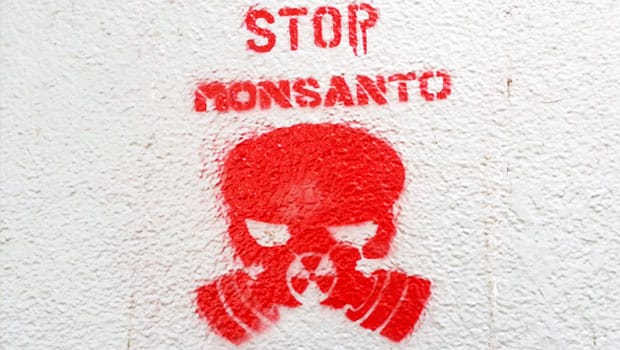
After over a year of nonstop negative publicity, it’s looking like the world may have had enough of Monsanto. By April 2014 no less than five countries—South Africa, France, Chile, Brazil and Sri Lanka—are either outright banning the sale of toxic weedkillers or GMO strains produced by the country, or demanding the company hold to truth in advertising standards. These countries are:
1. France.
In mid-March 2014, France temporarily bans the sale, use or cultivation of Monsanto GMO corn strain MON 810, the only strain that’s been previously approved in the European Union. The ban is purposefully instated before planting season to prevent more GMO crops from entering French farms. (More.)
2. Sri Lanka.
President Mahinda Rajapaksa of Sri Lanka gives a direct order to ban Monsanto’s weed killer Glyphosate (aka Roundup) after studies link the chemical to widescale kidney failure in the country. (More.)
3. Brazil.
Similarly, Brazil’s Federal Public Prosecutor requests that the country’s justice department ban the use of Glyphosate, as well as the herbicide 2,4-D, a major component of Monsanto-produced Agent Orange. (More.)
4. Chile.
Chile withdraws a bill that would have given Monsanto and other agribusiness multinationals the right to register patents for Chilean seeds, and then require farmers to pay the patent-holders for the rights to use those seeds. (More.)
5. South Africa.
South Africa’s Advertising Standards Authority (ASA) rules that a Monsanto ad championing GMO crops be immediately removed from radio play, finding that the agribusiness company’s claims were completely unsubstantiated—and even gives Monsanto a chance to back up the claims it made in the ad, which the company was unable to do outside of providing links to its own website.
It’s around this time that the controversial Trans-Pacific Partnership starts coming to light thanks to WikiLeaks (a story we later break at Vice News), which would terrify everyone until, ironically enough, it was killed by the Trump administration in 2017 after becoming a stumping point in the 2016 election, although there’s no guarantee it won’t come back in a new form. If the TPP in this form were to pass, Monsanto and other agribusiness companies would potentially be able to sue the above countries over lost profits for blocking the sale of glyphosate and other products.
GMO Soy Turns Out to Be Full of Glyphosate (4/29/2014)
A study conducted by researchers in Norway and the United Kingdom reveals that GMO soy absorbs gigantic amounts of Monsanto’s Roundup herbicide (glyphosate) as well as AMPA, a degradation product of glyphosate.
The safety of glyphosate is, of course, a highly contentious issue—even though it’s been linked to Parkinson’s, cancer and a slough of other health issues in studies like the one from MIT. But for those who want to avoid consuming pesticide, it seems fairly safe to say that you need to stay the hell away from GMO soy. Tricky business for vegans, who often rely on soy products or texturized vegetable protein (which has its own serious health risks associated with it) for dietary protein.
The study abstract reads:
This article describes the nutrient and elemental composition, including residues of herbicides and pesticides, of 31 soybean batches from Iowa, USA. The soy samples were grouped into three different categories: (i) genetically modified, glyphosate-tolerant soy (GM-soy); (ii) unmodified soy cultivated using a conventional “chemical” cultivation regime; and (iii) unmodified soy cultivated using an organic cultivation regime. Organic soybeans showed the healthiest nutritional profile with more sugars, such as glucose, fructose, sucrose and maltose, significantly more total protein, zinc and less fibre than both conventional and GM-soy. Organic soybeans also contained less total saturated fat and total omega-6 fatty acids than both conventional and GM-soy. GM-soy contained high residues of glyphosate and AMPA (mean 3.3 and 5.7 mg/kg, respectively). Conventional and organic soybean batches contained none of these agrochemicals. Using 35 different nutritional and elemental variables to characterise each soy sample, we were able to discriminate GM, conventional and organic soybeans without exception, demonstrating “substantial non-equivalence” in compositional characteristics for ‘ready-to-market’ soybeans.
Vermont Becomes the First State to Require GMO Labeling (5/9/2014)
Vermont becomes the first US state to require labeling of GMOs, with the law taking effect in mid-2016.
Similar measures have already been tried in both California and Washington State—in both cases, big agribusiness threw massive slabs of cash at propaganda campaigns to defeat the measures, and the measures were defeated. Vermont, however, successfully gets the measure through.
As hundreds of people cheered, Vermont Gov. Peter Shumlin signed a law Thursday that puts the small liberal state on the path to be the first to require labelling of genetically modified foods and promptly announced an online fundraiser to battle expected legal challenges from the food industry.
The Vermont law takes effect in mid-2016, but opponents said shortly after the bill signing that they would file a lawsuit. The Grocery Manufacturers’ Association said government has no compelling interest in warning consumers about GMO foods. Another obstacle to the state law looms in Congress as Republicans work on a bill that would forbid states from passing and enforcing laws requiring GMO labeling.
Similar measures are put into discussion in 23 of the United States (which is far behind the European Union, where labeling is required). Meanwhile, the spin chamber is already in effect—a report is launched by the agribusiness-focused University of California, Davis with suspiciously good timing, immediately after the passage of the law, claiming there is “no scientific reason” to label GMOs. (Report here.)
But frankly? In my most objective journalistic tones, UC Davis can go fuck itself. Guess who the biggest funders of their College of Agricultural and Environmental Sciences, and the UC Division of Agriculture and Natural Resources are? You guessed it: At least as of 2005, their biggest funders were, in order, Syngenta-Zeneca-Novartis, DuPont-Pioneer, Wyeth-Ayerst, Dow, Bayer-Aventis-AgrEvo, Anheuser-Busch and Monsanto-Calgene, according to the Sacramento Bee.
The primary author of this report works at the Department of Animal Science at UC Davis, while the primary reviewer works for the very same Syngenta/DuPont/Monsanto-funded Division of Argicultural and Resource Economics.
So did big agribusiness make sure this “scientific” report says what they want? Well, that would all be unsubstantiated allegation, of course. But take a look at where the money comes from, and draw your own conclusions.
Oh, and #1 funder Syngenta? They allegedly stalked and even threatened the family of a researcher at UC Berkeley when he turned up data they didn’t like about their herbicide product atrazine (here).
Neonicotinoid Insecticides are Revealed to Be Killing Butterflies, Worms, Fish, Birds and More (6/26/2014)
(This section by Ultraculture staff writer Andrei Burke.)
The same neurotoxic pesticides that have been implicated in global bee collapse are also harming butterflies, worms, fish and birds, according to a scientific review issued in June 2014, which calls for tighter regulation to limit their use. This comes in the same week that a potential link between pesticide exposure during pregnancy and autism is discovered. An international panel of 29 scientists finds “clear evidence of harm” from the use of two pesticides, neonicotinoids and fipronil, after analyzing two decades of reports on the subject. The evidence is “sufficient enough to trigger regulatory action.”
“We are witnessing a threat to the productivity of our natural and farmed environment,” says Jean-Marc Bontamin of France’s National Centre for Scientific Research, who co-authored the report.
The study, entitled Worldwide Integrated Assessment, is carried out by the Task Force on Systemic Pesticides, who advise the global watchdog on species loss, the International Union for Conservation of Nature.
The nerve-targeting insecticides, known as neonics, were “imperiling the pollinators, habitat engineers and natural pest controllers at the heart of a functioning ecosystem.” The effects of neonics can be instant and lethal, or chronic. Exposure can impair smell in some species, as well as curb procreation, reduce foraging, cause flight difficulties and increase susceptibility to disease. Neonics are able to persist in the soil for more than a thousand days, and in woody plants for over a year. The compounds into which they break down are potentially more dangerous than the original active ingredients. The pesticides have been used for pest management in farming, as well as pet flea control. But they stand accused in the recent decline of bees, known as colony collapse disorder, in Europe, Asia and the Americas.
Bees are crucial pollinators of human food crops—but they’re not the only species affected by the pesticides. The study says that these pesticides, absorbed by plants, are also harming other insect pollinators, birds and fish as they leach into the soil and water. The most affected specials are terrestrial invertebrates like earthworms, which are crucial soil-enrichers. Bees and butterflies are next on the list of species endangered by the pesticides. They are followed by aquatic invertebrates like freshwater snails and water fleas. Next are birds, and finally fish, amphibians and certain microbes.
“The combination of their wide scale use and inherent properties has resulted in widespread contamination of agricultural soils, freshwater resources, wetlands, non-target vegetation, estuarine and coastal marine systems,” the authors write. “This means that many organisms inhabiting these habitats are being repeatedly and chronically exposed to effective concentrations of these insecticides.”
It turns out pesticides aren’t good for pregnant women, either. The news about the danger pesticides cause to insect pollinators comes in the same week that researchers at the University of California, Davis discover a potential link between industrial pesticides and autism during pregnancy.
The UC Davis study examined 970 cases, and found that children whose mothers lived less than one mile from fields treated with organophosphate pesticides during pregnancy were nearly 60 percent more likely to have autism than children whose mothers did not live in the vicinity of those fields.
Global policy makers by this point seem to actually be paying attention to the dangers of industrial pesticides. Europe already has a two-year moratorium against the neonicotinoid variety of pesticide, which prohibits their use on flowering crops, and last week President Obama announced the creation of a pollinator health task force which will examine the impact of pesticide exposure on bee and other insect populations.
Mexico Wins a Major Victory Against Monsanto (8/19/2014)
In August, Mexico wins a major victory against Monsanto when a group of beekeepers just blocks the agribusiness giant from planting genetically modified soybeans.
A district judge in Yucatán throws out a permit given to Monsanto by the Mexican ministry of agriculture that would have allowed the company to plant over 625,000 acres of GMO soybeans throughout seven states in Mexico. This comes on the heels of protests by Mayan farmers and beekeepers, Greenpeace, the Mexican National Commission for the Knowledge and Use of Biodiversity, the National Commission of Natural Protected Areas and the National Institute of Ecology.
The judge is persuaded that Monsanto’s GMO crops, and its Roundup pesticide, would pose not only a massive threat to human health, but would also devastate the soil, water and bee colonies. The alleged effect of glyphosate on bee colonies is enough to convince the judge that allowing Monsanto free reign could well have destroyed the state’s income from the export of bee products—European Union convention restricts the importation of honey derived from GM products ruled unfit for human consumption. It also mandates that any honey that contains more than 0.9% genetically modified pollen must be labelled as GM and non-organic, likely meaning that Mexican exports would be dead on the shelves.
(It’s the fear of such sales drops occurring in the United States, due to consumers expressing suspicion or rejecting GMO products, that has lead the agribusiness industry to ensure that GMO products aren’t labelled in the country, via lobbying and throwing funds against state initiatives focused on GMO labeling.)
Monsanto’s soybeans are genetically modified to be resistant to the company’s own Roundup pesticide. That means that a giant crop of Monsanto soybeans can be planted in a field and then sprayed with Roundup, and the pesticide will only kill the weeds in the field, leaving the Roundup-resistant soybeans intact—and meaning that the final consumer of the product not only gets a genetically modified crop, but one that’s also been saturated with Roundup. Contrary to the questionable, potentially paid claims of “experts” like Neil deGrasse Tyson, this transgenic technology has nothing to do with the crop cross-breeding techniques that humanity has been using for over 7,500 years—transgenics have only been in development since the 1980s.
The ruling hinges on the Mexican constitution, which ensures that the government must consult with indigenous communities before making decisions that may affect them. Analysts have suggested that the ruling will set a precedent making it easier for indigenous communities to fight further pushes for GMO soy and corn—indigenous people in Mexico are currently forced to fight in courts simply to uphold those rights.
It’s worth noting that while NAFTA makes it increasingly difficult for national governments to fight corporations, the upcoming Trans-Pacific Partnership may make it nigh-on impossible—allowing multinational corporations to sue local governments over lost profits from decisions like this one. Since the legal fees both for fighting and losing to multinationals could potentially severely penalize or even bankrupt national governments, instances like this of countries successfully standing up to corporations may become increasingly few and far between.
Monsanto Reports Major Fourth Quarter Losses (10/14/2014)
 (This section by Ultraculture staff writer Andrei Burke.)
(This section by Ultraculture staff writer Andrei Burke.)
Monsanto reports major fourth quarter losses well below analysts’ expectations, due to a onetime payout settling an environmental suit. The biotech juggernaut announces a loss of $156 million (or 31 cents per share) on Wednesday, October 8. This figure is 7 cents per share beyond what was expected by analysts at both Bloomberg and Zacks Investment Research.
According to a report by the Associated Press, the biggest blow to Monsanto during the last quarter came from a one-time payment made to settle an environmental lawsuit. Had the lawsuit not occurred, the company would have only lost 27 cents per share.
Other factors involved changing trends in agriculture. The Wall Street Journal reports:
Monsanto and other big agribusiness companies are grappling with a second-straight year of bumper grain and oilseed crops that has sent corn futures prices to their lowest level in five years, with similar drops in soybean and wheat prices. The U.S. Department of Agriculture projects record U.S. corn and soybean harvests this year.
As a result, farmers are spending less on tractors, pesticides, fertilizer and seeds, which has driven the share price of farm equipment maker Deere Co. down by 12% over the past three months, and that of fertilizer producer Mosaic Co. by 13%. Monsanto shares fell about 13% over that period, when the S&P 500 stock index fell 2%.
Despite the fourth quarter loss and ongoing international legal issues, Monsanto saw higher sales of their two key business units—herbicide and genetically-engineered seeds—during the last four months, leading company executives and analysts alike to optimistic predictions of the coming year. Representatives from Monsanto said the they’re confident earnings-per-share will double by 2019, and it has been reported that the last-quarter lackluster results failed to alarm analysts.
“We’re confident in our ability to deliver the targets we’ve set in both the near term and over the longer term,” Monsanto chairman and CEO Hugh Grant says in a statement. “In an industry that’s particularly near-term focused right now, there are few companies as well positioned to deliver strong growth today while significantly increasing investments to enable the continued delivery of a broad range of innovative solutions for tomorrow.”
According to Market Business News, Monsanto’s full year net sales reached $15.9 billion, or 7 percent higher than the year prior. Sales for GMO corn and GMO soybean were up by $12 million and $112 million, respectively. Net sales of the company’s Roundup herbicide were totaled at $1.25, compared to $1 in the previous year.
In spite of the optimism of analysts and Monsanto execs, it’s important to keep in mind that pride comes before the fall. Anti-GMO furor seems to be mounting the world over. The prior week, three class-action lawsuits are filed against agribusiness behemoth Syngenta for depressed corn exports to China due to the company releasing a genetically-engineered variant of crop before it was approved by Beijing, thus drastically dropping prices for all domestic corn. And for the following months, residents of Colorado are slated to vote on a measure that would impose new GMO-labeling laws in stores across the state.
USDA Approves Monsanto’s GMO Soybeans (1/21/2015)

On Thursday, January 15, 2015, Monsanto receives the final approval from the US Department of Agriculture (USDA) for its new GMO, herbicide resistant soybeans and cotton.
The new GMO soybeans and cotton are engineered to take a new herbicide—not glyphosate, but a combination of glyphosate and dicamba that Monsanto is calling components of the “Roundup Ready Xtend crop system.” Glyphosate has been linked with Parkinson’s and cancer; dicamba (3,6-dichloro-2-methoxybenzoic acid) is moderately toxic by ingestion and slightly toxic by inhalation or dermal exposure in rats; this does not count as “unusual” handling hazards. It has been shown to enlarge liver cells in dogs, but not humans.
The USDA’s Animal and Plant Health Inspection Service (APHIS) gives the GMO soybeans and cotton “non-regulated” status; Monsanto is now waiting for approval on the glyphosate/dicamba mixture from the Environmental Protection Agency (EPA). Many consumer, environmental and farmer groups have lashed out at the new Xtend system, claiming it will increase weed resistance to herbicide over time—one impetus behind launching Xtend seems to be increasing weed resistance to Monsanto’s prior Roundup herbicide.
China is showing marked suspicion in allowing Monsanto’s soybeans into its market; however, Monsanto’s Chief Technology Officer Robb Fraley announces that the company expects a 2016 approval for commercial launch in China.
Projections from the USDA and Monsanto are that the new Xtend system will up dicamba use in cotton by 14 times, and in soybeans by 500 times, increasing pesticide risk to farm families. (via Reuters)
Chuck Norris Has Had it Up to Here With Monsanto Over Glyphosate, EPA Corruption (1/26/2015)
As 2015 opens, the unthinkable happens: Chuck Norris decides to take on Monsanto as a sworn enemy. The 74-year-old actor, martial arts legend and cornerstone of Internet humor decides that the agribusiness giant’s Roundup (glyphosate) herbicide is a gigantic problem—as is the fact that the US regulatory bodies in charge of deciding what Monsanto can and cannot bring to market are saturated with Monsanto lobbyists.
Norris, a conservative Christian, is also an activist and philanthropist, who has previously worked to bring attention to veterans’ issues and HIV/AIDS victims in India, among many other causes.
He writes a long editorial at WND, which begins:
There always seems to be something afoot that could possibly threaten our health and well-being. And we generally don’t have to look very far to find it. On occasion, the news finds us. The problem is that the threat is not always clear, nor are the actions we need to take to deal with it. It’s what makes it so hard for us to avoid tripping over what is toxic to us.
A good case in point is the latest dust-up over glyphosate, the active ingredient in Monsanto’s Roundup, the world’s best-selling weedkiller. Monsanto began marketing glyphosate under the Roundup name in the 1970s, and it quickly became an industry standard. In 1997, its use tripled with the introduction of Monsanto’s Roundup Ready crops, plantings genetically modified to withstand glyphosate in order to enable farmers to use more of the herbicide in killing crop-threatening weeds. Glyphosate is sprayed on most of the corn and soybean crops in the United States, as well as over sugar beets, canola and other crops.
Monsanto May be Driving the Monarch Butterfly into Extinction (2/17/2015)
The U.S. Fish and Wildlife Service announces that it is partnering with the National Fish and Wildlife Foundation and the National Wildlife Federation to allocate $2 million towards funding projects to conserve the habitat of Monarch butterflies. The Monarch butterfly population has by now fallen by an estimated 90 percent from a high of one billion in 1995, according to the Wildlife Service… possibly due to Monsanto’s Glyphosate herbicide.
“The decline of Monarchs is an ominous sign for natural systems in the North American continent,” says Dan Ashe, Director of Wildlife Service at a press conference to announce the partnership.
According to a report by Wildlife Service, this is due to the use of the herbicide Glyphosate in the destruction of milkweed which is used by the butterflies for nesting and as a source of food. Milkweed was previously found in nearly half of all corn and soybean fields throughout the Midwest in 1999. It declined to approximately eight percent in 2009 due to Glyphosate.
Use of Glyphosate has proliferated since the mid-1990s; decline of the butterflies has corresponded with the increased use of Roundup Ready beginning in 1995, according to the Center for Food Safety.
“This iconic species is on the verge of extinction because of Monsanto’s Roundup Ready crop system,” says Andrew Kimbrell, executive director for the Center for Food Safety. “To let the monarch butterfly die out in order to allow Monsanto to sell its signature herbicide for a few more years is simply shameful.”
Projects funded by the Wildlife Service will raise awareness regarding the issue as well as encourage the planting of milkweed to foster the Monarch population. Monarch butterflies are officially listed as endangered in December 2014 by the Wildlife Service.
Colombia Wants its Cocaine Monsanto-Free (5/14/2015)

Now that the World Health Organization has announced that Monsanto’s glyphosate weedkiller (i.e. Roundup), is truly, madly, deeply toxic (see the original research here), Colombia is pushing back. Specifically, President Juan Manuel Santos wants the country’s National Drug Council (which is, of course, backed by United States war-on-drugs money) to quit using glyphosate to destroy coca fields.
While Colombia has traditionally used Roundup to wipe out cocaine production (although apparently not very efficiently, as Colombia has now overtaken Peru as the world’s top cocaine producer), local farmers have long been livid that not only is glyphosate being sprayed on coca crops, but that it also settles on nearby legal crops. I’m sure the thought of Monsanto-free cocaine will increase coke dealers’ profits in hipster areas throughout America; they might as well advertise it as a selling point.
What the Future Holds
As a result of the Great Monsanto War and resulting negative publicity, Monsanto’s stock plummeted into the garbage in 2015, forcing them to downsize the company.
As you can see here (click to five year view), that stock downturn has largely reversed.
The TPP has been killed, which has set back Monsanto’s plans significantly. However, there’s no guarantee the TPP won’t return, particularly as Trump continues to buckle to corporate pressure even as his administration strips out any remaining environmental protections in the US (like the EPA). The future looks dark—but if this history has shown anything, it’s how huge of an effect the public, and even a few bloggers, can have an effect on multinational corporations and world events.
Let it stand as an inspiration—learn from it what you can and prepare for the future as you will!
For More: Monsanto vs. the World: The Monsanto Protection Act, GMOs and Our Genetically Modified Future
For more of our reporting on Monsanto, check out our nonstop-selling book Monsanto vs. the World.
Monsanto—one of the largest agriculture and biotech companies in the world—creates genetically engineered seeds and food, or GMOs. They’ve also brought us toxic chemicals like DDT, PCBs and even Agent Orange. But what is Monsanto truly doing to our diet—and why do many consider their business practices deeply abusive? Are GMOs the solution to world hunger, or a shockingly dangerous threat to our health? And does Monsanto really, as some suggest, control much of the United States’ agriculture and food departments?
Meticulously researched, Monsanto vs. the World puts to rest the myths and shows the shocking reality, delving into the science of GMOs, the political machinations of Monsanto in Washington and around the world, and showing what you can do to keep GMOs off your plate for good.




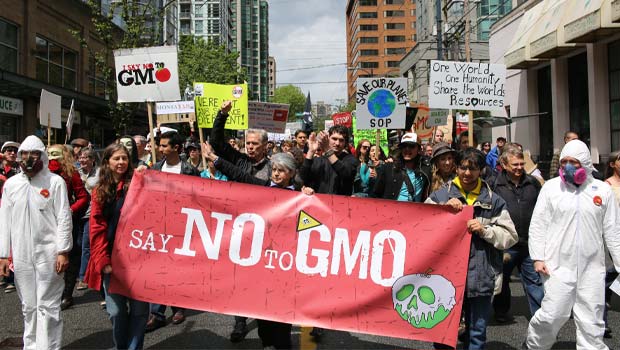
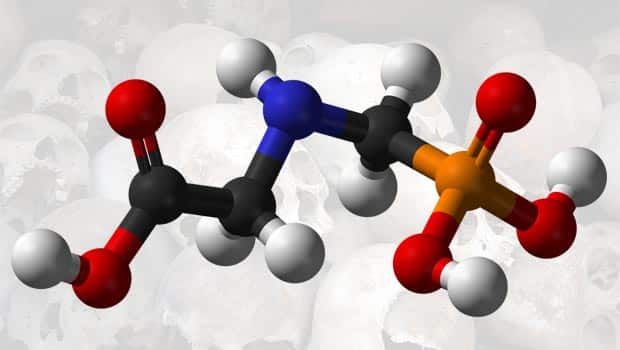





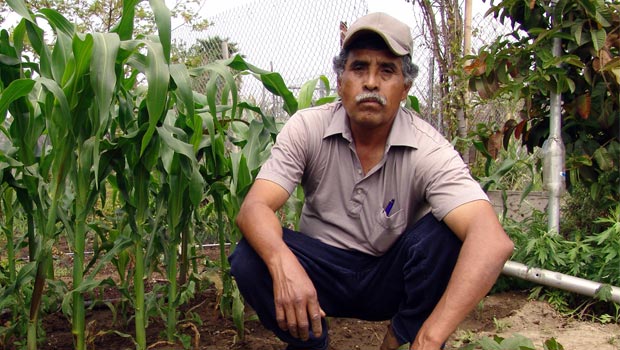


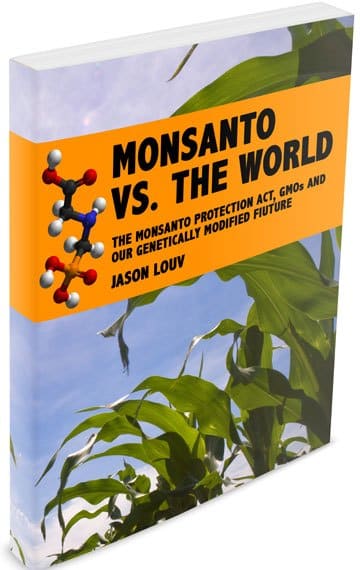
My brother recommended I might like this website. He was entirely right.
This put up actually made my day. You cann’t consider just how so much time I had spent for this info!
Thanks!
1-Please use this Supreme court ruling to stop Monsanto forcing farmers to buy seeds every year
2-the article reference is below
https://www.nytimes.com/2017/05/30/business/supreme-court-patent-rights-lexmark.html
Hello admin, i must say you have high quality content here.
Your page should go viral. You need initial traffic boost only.
How to get it? Search for: Mertiso’s tips go viral